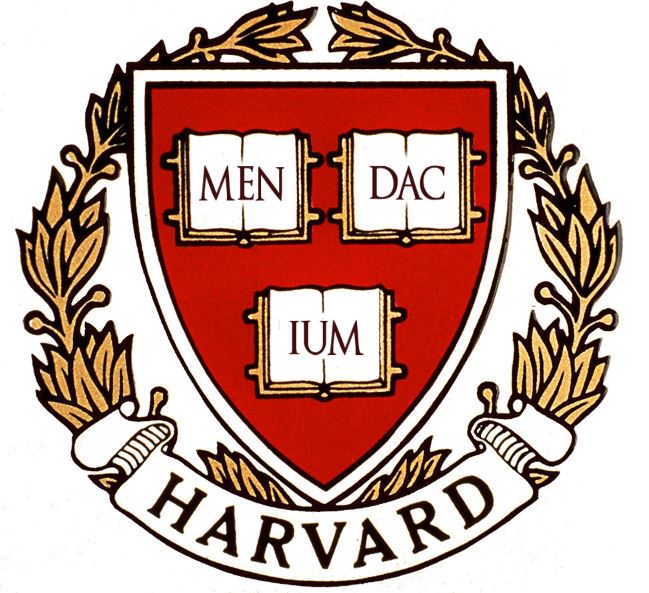
by Sohrab Ahmari
The culture wars heat up, and are not likely to die down. Harvard is now determined to ostracize, censor, and ultimately root out Orthodox Christianity. That’s okay, Christianity has faced oppression and persecution before. We always win.
Drive down Massachusetts Avenue, one of the main thoroughfares in the tony, hyper-educated city of Cambridge, and you will spot two handsome Episcopal churches located a few blocks apart. Both houses of worship are usually festooned with rainbow flags, Black Lives Matter banners, statements on transgender rights and so on. The churches epitomize what might be called “Harvard Christianity”—a Christianity that is fully conformed to modern liberalism and the opinions of the meritocrats who teach and study at the elite university nearby.
But other strands of Christianity—those that conform themselves to the faith’s timeless moral teaching and uphold its sexual anthropology—are not so welcome at the university. Indeed, Harvard is now determined to ostracize, censor, and ultimately root out orthodox Christianity from a university that was founded to train ministers in the Puritan tradition. That is the inevitable conclusion to be drawn from the school’s little-noticed decision this year to suspend and defund the largest evangelical fellowship on campus.
The fellowship, Harvard College Faith and Action (HCFA), ran afoul of the school’s progressive dogmas last September when it asked one of its student leaders to step down from her post. The student was in a same-sex relationship, which meant that she had “an irreconcilable theological disagreement pertaining to our character standards,” as the HCFA’s co-presidents told the Harvard Crimson in February. The HCFA’s character rules on premarital sexual activity apply to students of all orientations, the co-presidents insisted, but their pleas fell on deaf ears. Egged on by a ravenous progressive mob, the Harvard administration suspended the group in February, and last month the Undergraduate Council voted to cut its funding.
The move is of a piece with the wider progressive crackdown against liberty on campus. But for orthodox Christians and other people of tradition, the episode has a deeper, and darker, meaning. For several years now, orthodox Christians, Catholics especially, have wondered whether it is still possible to come to peaceable terms with the liberal state. The debate has usually been framed in terms of intellectual history and genealogy, pitting thinkers who believe that today’s PC despotism is a perversion of the liberal tradition against those who argue that illiberal liberalism of the kind on display at Harvard is, in fact, the fullest expression of the liberal idea.
The former camp—those who saw today’s liberal excess as a bug and not a feature—has been the more optimistic. The “compatibilists” (like yours truly) argued that liberalism’s foundational guarantees of freedom of speech, conscience, and association sufficed to protect Christianity from contemporary liberalism’s censorious, repressive streak. The task of the believer, they contended, was to call liberalism back to its roots in Judeo-Christianity, from which the ideology derives its faith in the special dignity of persons, universal equality and much else of the kind. Christianity could evangelize liberal modernity in this way. Publicly engaged believers could restore to liberalism the commitment to ultimate truths and the public moral culture without which rights-based self-government ends up looking like mob rule.
The latter camp—those who thought today’s aggressive progressivism was the rotten fruit of the original liberal idea—was more pessimistic. They argued that liberal intolerance went back to liberalism’s origins. The liberal idea was always marked by distrust for all non-liberal authority, an obsession with promoting maximal autonomy over the common good, and hostility to mediating institutions (faith, family, nation-state, etc.). Yes, liberalism was willing to live with and even borrow ideas from Christianity for a few centuries, the non-compatibilists granted. But that time is over. Liberalism’s anti-religious inner logic was bound to bring us to today’s repressive model: Bake that cake—or else! Say that men can give birth—or else! Let an active bisexual run your college Christian club—or else!
The compatibilist/non-compatibilists divide has been invisible to most of the secular media, in large part because, in conventional policy and partisan terms, both sides looked like “social conservatives.” They both opposed abortion, same-sex marriage, gender ideology and so on. But the compatibilists were more or less invested in the liberal order, even though it caused them much heartache. Whereas the non-compatibilists were all post-liberal to varying degrees, meaning that they looked beyond liberalism as the horizon of Western politics. One side has been anti-systemic in its basic posture. The other has not. One side has been willing to consider alternatives to liberalism. The other side has hoped to revive the 20th-century synthesis between liberalism and Christianity.
But all that may be changing. With each fresh instance of liberal despotism, such as the one at Harvard, the compatibilists are likely to adopt a practical non-compatibilist position, even as they continue to reverence the American Founding and all the myriad material benefits of liberal order. There is a logic to this shift. The more the liberal state and liberal institutions squeeze orthodox believers, the harder it becomes to imagine liberalism returning to some prior state—to the days when liberalism not only accommodated but even encouraged traditional morality and belief. Of course, some Christian denominations welcome liberal dominance in the religious sphere and are happy to remake their faith in the image of liberalism—quite literally in the case of the two Cambridge churches. But orthodox believers won’t go along. Which means that our culture war is more likely to heat up than die down in the coming years.
It is up to liberals to decide if they want to push further.